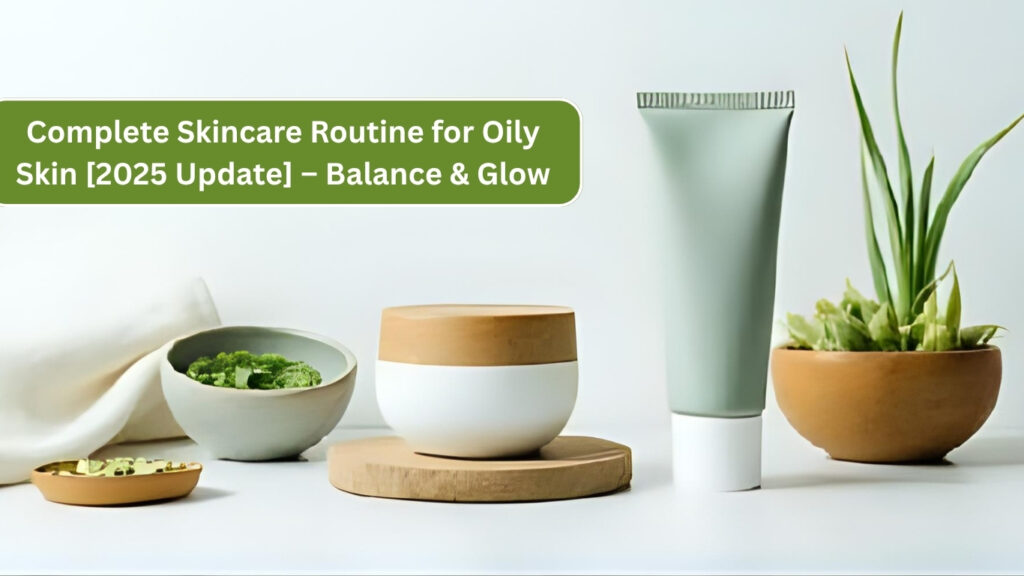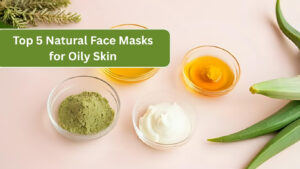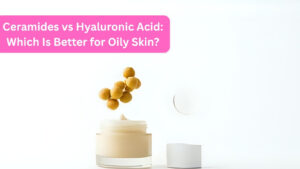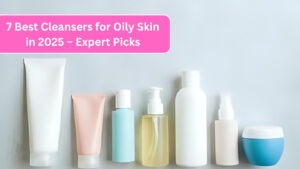Oily skin can feel like a never-ending battle: shine by midday, enlarged pores, and breakouts that just won’t quit. But with the right routine—tailored to your skin’s unique needs—you can balance excess sebum, minimize pore appearance, and enjoy a healthy glow that isn’t slick or greasy. In this updated 2025 guide, we’ll walk you through each step of a complete skincare regimen for oily skin, explain the science behind every product choice, and share expert tips to keep shine at bay all day long.
1. Cleansing: Starting with a Fresh Canvas
Why it matters: Cleansing removes dirt, sweat, excess oil, and environmental pollutants that clog pores and trigger breakouts.
- Morning cleanse: Use a gentle, pH-balanced gel or foam cleanser containing salicylic acid (1–2%). Salicylic acid penetrates oil-filled pores and exfoliates inside, preventing blackheads.
- Evening double cleanse:
- Oil-based cleanser (e.g., mineral oil or a lightweight cleansing oil) to lift sunscreen, makeup, and sebum.
- Water-based cleanser to wash away residue.
Pro tip: Avoid harsh, stripping cleansers (high-pH bars or abrasive scrubs) that can trigger rebound oiliness.
2. Exfoliation: Banishing Dead Skin Cells
Why it matters: Builds up of dead cells can worsen clogged pores and dullness. Exfoliation unblocks pores and improves product penetration.
- Chemical exfoliants:
- BHA (Salicylic acid): Oil-soluble, great for deeper cleansing.
- AHA (Glycolic or lactic acid): Surface-level exfoliation to refine texture.
- Frequency:
- 2–3× per week, depending on tolerance.
- Always patch-test and introduce gradually.
Expert tip: On nights you exfoliate, skip any other actives (e.g., retinoids) to avoid irritation.
3. Toning: Balancing pH & Prepping Skin
Why it matters: Restores optimal skin pH, removes any cleanser residue, and preps skin for serums.
- Look for:
- Niacinamide (2–5%): Regulates oil production, improves barrier function, and reduces redness.
- Witch hazel (alcohol-free): A mild astringent to temporarily tighten pores.
- Application: Sweep over face with a cotton pad or pat in with fingertips.
4. Treatment Serums: Targeted Solutions
Why it matters: Concentrated actives deliver specific benefits—oil control, hydration, pore-refining.
| Concern | Active Ingredient | Benefits |
|---|---|---|
| Excess shine/oil | Niacinamide | Regulates sebum, minimizes pores |
| Breakouts | Benzoyl peroxide (2.5%) | Antibacterial to clear acne |
| Texture & pores | Retinoid (adapalene) | Promotes cell turnover, refines skin texture |
| Hydration (oil-free) | Hyaluronic acid (light) | Maintains hydration without clogging pores |
Note: If using both benzoyl peroxide and retinoid, alternate nights to avoid irritation.
5. Moisturizing: Hydrate Without the Grease
Why it matters: Even oily skin needs hydration. Skipping moisturizer can prompt the skin to produce more oil.
- Ideal textures:
- Gel-based lotions
- Water-gel creams
- Key ingredients:
- Hyaluronic acid: Lightweight hydration.
- Glycerin: Humectant that draws moisture in.
- Ceramides: Strengthen barrier without heaviness.
6. Sun Protection: Non-Negotiable Step
Why it matters: UV damage worsens oiliness and aging, causes post-inflammatory hyperpigmentation after acne heals.
- Choose:
- Gel or fluid sunscreens labeled “oil-free” or “matte finish.”
- Chemical filters (e.g., avobenzone, homosalate) for lightweight feel.
- Application:
- 2 finger-lengths to face and neck.
- Reapply every 2–3 hours when outdoors.
7. Weekly Extras: Masks & Treatments
A. Clay Masks
- Frequency: 1× per week.
- Benefits: Kaolin or bentonite clay absorb excess oil, draw out impurities.
B. Hydrating Masks
- Frequency: 1× per week (alternate with clay).
- Benefits: Replenish barrier lipids and soothe any over-stripped areas.
8. Lifestyle & Diet Tips
- Balanced diet: Omega-3 rich foods (salmon, flaxseeds) to regulate skin lipids.
- Hydration: 8–10 glasses of water/day.
- Stress management: High stress can spike oil production—consider meditation or yoga.
- Sleep: 7–8 hours to support barrier repair.
9. Troubleshooting Common Issues
- Persistent shine by noon?
- Add 1–2 oil-absorbing sheets to your routine.
- Consider introducing a lightweight primer with mattifying powders under makeup.
- Irritation or dryness?
- Cut back exfoliation frequency.
- Swap to fragrance-free formulas.
- Acne flares?
- Spot-treat with benzoyl peroxide.
- See a dermatologist if nodular or cystic.
10. Sample Morning Routine Summary
- Cleanser: Salicylic acid gel
- Toner: Niacinamide witch hazel toner
- Serum: Lightweight niacinamide serum
- Moisturizer: Water-gel cream with ceramides
- Sunscreen: Matte finish SPF 50
FAQs
Q1: Can I skip moisturizer if my skin is very oily?
No—skipping hydration triggers rebound oil production. Choose a lightweight, oil-free moisturizer instead.
Q2: Will using too many actives break me out?
Overloading actives can irritate skin and worsen breakouts. Introduce one active at a time and monitor skin response.
Q3: How soon will I see improvement?
Typically, within 4–6 weeks. Oil-control ingredients like niacinamide show gradual benefits; retinoids need consistent use.
Q4: Are powder foundations better for oily skin?
Yes—powder or mineral foundations absorb excess oil and help maintain a matte finish.
Q5: Can I use facial oils on oily skin?
Yes—non-comedogenic oils (e.g., squalane) in small amounts can actually balance sebum production.





